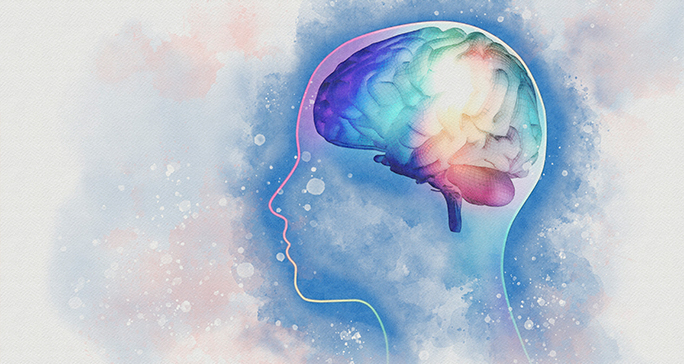- Diseases
- Acoustic Neuroma (14)
- Adrenal Gland Tumor (24)
- Anal Cancer (66)
- Anemia (2)
- Appendix Cancer (16)
- Bile Duct Cancer (28)
- Bladder Cancer (68)
- Brain Metastases (28)
- Brain Tumor (228)
- Breast Cancer (716)
- Breast Implant-Associated Anaplastic Large Cell Lymphoma (2)
- Cancer of Unknown Primary (4)
- Carcinoid Tumor (8)
- Cervical Cancer (154)
- Colon Cancer (164)
- Colorectal Cancer (110)
- Endocrine Tumor (4)
- Esophageal Cancer (42)
- Eye Cancer (36)
- Fallopian Tube Cancer (6)
- Germ Cell Tumor (4)
- Gestational Trophoblastic Disease (2)
- Head and Neck Cancer (6)
- Kidney Cancer (124)
- Leukemia (344)
- Liver Cancer (50)
- Lung Cancer (288)
- Lymphoma (284)
- Mesothelioma (14)
- Metastasis (30)
- Multiple Myeloma (98)
- Myelodysplastic Syndrome (60)
- Myeloproliferative Neoplasm (4)
- Neuroendocrine Tumors (16)
- Oral Cancer (100)
- Ovarian Cancer (170)
- Pancreatic Cancer (166)
- Parathyroid Disease (2)
- Penile Cancer (14)
- Pituitary Tumor (6)
- Prostate Cancer (144)
- Rectal Cancer (58)
- Renal Medullary Carcinoma (6)
- Salivary Gland Cancer (14)
- Sarcoma (236)
- Skin Cancer (294)
- Skull Base Tumors (56)
- Spinal Tumor (12)
- Stomach Cancer (60)
- Testicular Cancer (28)
- Throat Cancer (90)
- Thymoma (6)
- Thyroid Cancer (98)
- Tonsil Cancer (30)
- Uterine Cancer (78)
- Vaginal Cancer (14)
- Vulvar Cancer (18)
- Cancer Topic
- Adolescent and Young Adult Cancer Issues (20)
- Advance Care Planning (10)
- Biostatistics (2)
- Blood Donation (18)
- Bone Health (8)
- COVID-19 (362)
- Cancer Recurrence (120)
- Childhood Cancer Issues (120)
- Clinical Trials (624)
- Complementary Integrative Medicine (24)
- Cytogenetics (2)
- DNA Methylation (4)
- Diagnosis (230)
- Epigenetics (6)
- Fertility (62)
- Follow-up Guidelines (2)
- Health Disparities (14)
- Hereditary Cancer Syndromes (122)
- Immunology (18)
- Li-Fraumeni Syndrome (8)
- Mental Health (118)
- Molecular Diagnostics (8)
- Pain Management (62)
- Palliative Care (8)
- Pathology (10)
- Physical Therapy (18)
- Pregnancy (18)
- Prevention (892)
- Research (390)
- Second Opinion (74)
- Sexuality (16)
- Side Effects (602)
- Sleep Disorders (10)
- Stem Cell Transplantation Cellular Therapy (216)
- Support (404)
- Survivorship (322)
- Symptoms (184)
- Treatment (1770)
Cancer treatment side effect: Chemobrain
BY Meagan Raeke
4 minute read | Published March 01, 2017
Medically Reviewed | Last reviewed by an MD Anderson Cancer Center medical professional on March 01, 2017
In the late 1990s, doctors began to pay attention to chemobrain, a term used by an increasing number of patients to describe mental symptoms and side effects.
Since that time, chemobrain has become accepted as a legitimate, diagnosable condition experienced by many cancer patients. We sat down with Jeffrey Wefel, Ph.D., associate professor of Neuro-Oncology and chief of Neuropsychology, to learn more.
What is chemobrain?
Chemobrain is a term used by patients to describe changes in their thinking, or cognitive function. Depending on the person, “chemobrain” may refer to forgetfulness, slower thinking, difficulty concentrating or periods of mental confusion or “fogginess.” It’s difficult to pinpoint an exact definition, but it generally describes a feeling that “my brain is not working quite the same as it was before cancer.”
What causes chemobrain?
When we look at cognitive changes in cancer patients, there are two distinct groups. In the first, patients with brain tumors can have changes in cognitive function due to the location of their brain tumor and treatments that directly affect brain tissue.
However, “chemobrain” is often used to refer to cognitive changes experienced by patients in the other group: those without cancer in the brain. While the term “chemobrain” seems to directly blame the problem on chemotherapy, we’ve actually found that cognitive problems can appear before any treatment begins. Even if cancer is not growing in the brain, it can still disrupt systems in the body that end up affecting mental function. Some treatment, including certain forms of chemotherapy, hormonal therapy and immunotherapy, can also cause cognitive dysfunction, meaning they can directly or indirectly disrupt, damage or alter normal brain function.
Does chemobrain get better with time?
For many patients, the symptoms of chemobrain improve over time, though they may not go away completely. Some people may continue to experience chemobrain symptoms long after they’ve completed their cancer treatment.
How is chemobrain diagnosed?
At MD Anderson, chemobrain diagnosis begins with a referral to our Neuropsychology team for evaluation. A neuropsychologist will talk to the patient and the family to get a full picture of the symptoms, including specific situations where the symptoms get better or worse. The patient also takes a series of standardized tests to measure their thinking skills.
The evaluation shows both strengths and weaknesses in thinking skills. It also rules out (or may reveal) other diagnoses, such as dementia, anxiety, depression or fatigue, all of which can also affect mental function. The neuropsychologist then works with the patient to develop a treatment plan tailored to address their symptoms and goals.
What treatments are available for chemobrain?
Stimulants or brain training may help some patients. Cognitive strategies or healthy lifestyle changes, like improved sleep quality and exercise, can also help. Because symptoms and personal priorities vary from person to person, our treatment plans are highly personalized as well. Read tips for coping with chemobrain.
How has chemobrain research changed in recent years?
Over the last 10 years, the number of publications on cognition and chemobrain has tripled. We have confirmed that chemobrain is real. Now we’re trying to better understand which patients have the highest risk for developing chemobrain, what’s causing it and the most effective treatment approaches to maintain brain health and maximize cognitive function.
We’re currently recruiting breast cancer patients for an NIH-funded observational study that will follow patients over several years. Our goal is to find biomarkers to understand who’s at risk for chemobrain.
Measures of cognitive function are also being incorporated into clinical trials more often. In addition to studying how well a particular therapy controls the cancer, we’re also monitoring how that therapy affects a patient’s thinking skills, both in the short term and into survivorship. One example of this is a study that showed that we can help maintain cognitive function in patients receiving whole brain radiation by adding a medication to their treatment.
In the lab, we’re studying regenerative medicine and other approaches to treat brain damage and restore cognitive function after the brain has been damaged by cancer or cancer treatment.
What advice do you have for caregivers when a loved one feels like they have chemobrain?
Sometimes caregivers aren’t sure why their loved one is experiencing changes in thinking or behavior, how best to manage these changes and if they will improve or worsen with time. It’s important for our patients and their loved ones to know there are experts who can help them understand these changes and provide treatment recommendations.
Ask your loved one’s MD Anderson physician for a referral to Neuropsychology for evaluation of chemobrain symptoms. This is the first step to diagnosing and treating cancer-related cognitive changes.
Request an appointment at MD Anderson online or by calling 1-888-964-3107.
Related Cancerwise Stories

Even if cancer is not growing in the brain, it can still disrupt systems in the body that end up affecting mental function.
Jeffrey Wefel, Ph.D.
Researcher





